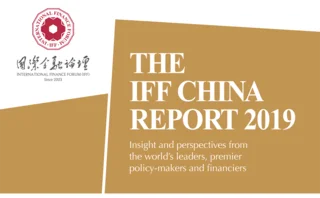
The futures game


Most of China’s bulk commodities trade comes from the countries bordering the Belt and Road Initiative (BRI). These countries are growing rapidly and possess exceptional development potential that can lay the foundations for win‑win co‑operation. In 2017, the total trade volume between China and the BRI countries was around US$1.3 trillion, accounting for almost 40% of the world’s total. There are three commodity futures exchanges in China, and more than 50 varieties of commodity are currently listed, most of which are traded with countries along the BRI.
Infrastructure and future logistics
Transportation is a vital link in the delivery chain from futures to actuals; the inconvenience of shipping goods could also lead to market cornering. Chinese entrepreneurs have co-operated with the countries along the BRI to upgrade the infrastructure and enable the smooth flow of goods. A drop in the logistics cost of commodity trading will benefit the development of futures markets as a platform for countries to better integrate into the BRI.

The futures market provides a place to exchange all kinds of information; by observing the day-to-day transactions, and changes in price and hedging, countries will better understand China’s political and economic situation, which will contribute to information connectivity and mutual understanding.
The logistics cost of commodities trading will be greatly reduced. With well-equipped transportation infrastructure and lower costs, countries along the BRI will develop stronger economic ties with China and consequently establish more links in broader fields. In this instance, the characteristics of the futures market will manifest themselves in the best light: rapid dissemination of information, a wide range of influence and a loyal and cohesive customer base.
There are four types of futures market co-operation with countries along the BRI:
1. China and some countries along the BRI list and trade commodities as actuals and in established futures markets. There are 22 different futures products traded – including palm oil, silver, fuel oil, natural rubber, cotton and cotton yarn – all of which are vital to daily life. Preliminary co-operation with Malaysia, Singapore and other coastal territories has been established, and futures trading and settlement is a platform to identifying common products for further collaboration. In 10‑year, 20‑year or even longer-term collaboration in business ventures, bank loans and insurance, futures trading would co‑ordinate various resources that are critical to the BRI and will improve its stability, safety and effectiveness.
2. Other commodities have already been listed on China’s futures market and have entered into actual trade markets, but have not yet been listed on the futures market of other countries along the BRI. China will work with exchanges in these countries to facilitate commodities listing or attract investors to directly participate in the Chinese market.
3. Some countries do not have established futures markets, although their commodities are listed in China’s futures market. In the Middle East, for example, only Dubai has a crude oil exchange, at the Dubai Mercantile Exchange, in a joint venture with the Chicago Mercantile Exchange. Although Saudi Arabia exports the most crude oil in the region, it has not yet established its own futures exchange. China relies heavily on crude oil imports, with 60% of its demand coming from abroad. If a crude oil exchange in Saudi Arabia could become successful and mature in China’s futures market, it would attract large investment, bringing benefits to both China and the Middle East.
4. Some commodities are traded in the futures markets of the countries along the BRI, but are not yet listed on China’s futures market. We will explore possibilities for co-operation over these commodities.
These four categories of commodity all have potential for deeper co-operation. Because our futures market has not opened up enough to the world, and foreign investors have only minor involvement in the domestic futures market, China’s futures market cannot at present set the pricing benchmark for global commodities and earn its place at the centre for risk control in the global economy. Openness can be increased by efforts in the following three sectors.
Legal framework
Overseas investors who participate in China’s futures market attach great importance to the legal system. There is, however, currently no ‘futures law’ or other provision to regulate market participants’ behaviour in China, and this is the major obstacle to openness to the rest of the world. After the listing of Shanghai crude oil futures, industry insiders and commodity customers said China must expedite the enactment of a futures law to open itself up and internationalise Shanghai crude oil futures to make them globally acceptable in pricing. Equipping foreign investors with laws to settle disputes will enhance their confidence in participating in the market.
Overseas investors are passionate about trading many commodities in China such as iron ore, steel and rubber, but the dearth of regulation impedes investment and undermines investor confidence. If the futures law is put into effect, major financial institutions and customers will flock to the market, ensuring the stability of market pricing and strengthening of the hedging function. As a result, there is a possibility that the price manifested in the futures markets will be internationally accepted as the pricing benchmark.
When the price is widely accepted in international trade and renminbi is used for transaction settlement, the desire to hold renminbi in the long term also increases. Renminbi will have an important role to play when it is used by countries and enterprises to buy oil assets all over the world and numerous commodities will exist to support renminbi internationalisation. Conversely, if these commodities do not internationalise, people will not hold renminbi for long. Without the futures law, it will be difficult for China to impose global influence on commodities pricing, which would be detrimental to national economic security.
New openness in the futures market leads many Chinese people to fear contagion from overseas financial risk. Since the 2007–08 financial crisis, a negative impression of financial derivatives has persisted. There has been clamour for restrictions on foreigners entering the Chinese market and curtailing of Chinese involvement in financial derivatives exchanges abroad. In fact, the financial crisis arose in the over-the-counter derivatives market, not the futures market, the risk management ability of which received significant recognition at the 2009 Group of 20 summit. Currently, the risk management of China’s futures market is relatively mature, and has passed the risk assessments twice conducted by international financial organisations, which also rated China’s risk control mechanism and ‘penetration’ method of supervision highly, and recommended them to other countries.
China’s futures market has the capacity to control the risk brought by foreign participants. At present, markets for crude oil futures, iron ore and terephthalic acid are open and running smoothly. A relatively overarching risk prevention and monitoring mechanism has had remarkable results controlling risk and rooting out market manipulation and misconduct. During the financial crisis, China also stood strong against the contagion of risk from abroad.
Policy
The authorities should design co-ordinated policies in foreign exchange and customs, and lift certain entry bars for foreign investors entering the Chinese market.
Enterprises
Outward-looking enterprises should use various financial instruments comprehensively, including the stock index futures market. ‘Going Out’ requires that enterprises should not only use the static thinking of actuals to manage the risks of enterprises, but also manage the risks through dynamic development in futures.
Only users who have a paid subscription or are part of a corporate subscription are able to print or copy content.
To access these options, along with all other subscription benefits, please contact info@centralbanking.com or view our subscription options here: subscriptions.centralbanking.com/subscribe
You are currently unable to print this content. Please contact info@centralbanking.com to find out more.
You are currently unable to copy this content. Please contact info@centralbanking.com to find out more.
Copyright Infopro Digital Limited. All rights reserved.
As outlined in our terms and conditions, https://www.infopro-digital.com/terms-and-conditions/subscriptions/ (point 2.4), printing is limited to a single copy.
If you would like to purchase additional rights please email info@centralbanking.com test test test
Copyright Infopro Digital Limited. All rights reserved.
You may share this content using our article tools. As outlined in our terms and conditions, https://www.infopro-digital.com/terms-and-conditions/subscriptions/ (clause 2.4), an Authorised User may only make one copy of the materials for their own personal use. You must also comply with the restrictions in clause 2.5.
If you would like to purchase additional rights please email info@centralbanking.com test test test







